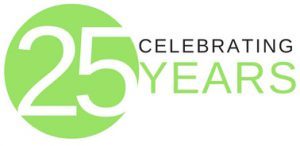New disclosure regulations for investors a positive move
July 28, 2016

New regulations initiated by Canada’s Security Regulators went into effect on July 15. Referred to as CRM2, these regulations are the second phase of the Client Relationship Model, intended to give investors increased transparency around fees and performance.
Under the new regulations investment firms will now have to provide their clients with two annual statements detailing their investment returns and dollar amounts of charges and fees. Most investors will see the improvements in January 2017 when they receive their 2016 year-end statements.
A number of the required improvements relating to disclosure have already been implemented by some investment firms. As of July 15 all firms must provide this information.
The performance statement will provide returns for the past year. You will also see an annualized return since your account was started.
The goal of investing is to make a profit. It is only fair that your success at doing so is clearly stated. Understanding your returns will help you evaluate your success.
Success has two components.
First is your success in achieving your long-term financial goals. For example, if you need an annualized return of five percent in order to meet your long-term objectives, you will now have a clear understanding if that return was achieved.
The second component to success that needs to be measured is your investment ability: both yours and your financial advisor’s. Investment returns are most successful when both the financial advisor and client make the right decisions.
The second statement covering costs and compensation will better disclose the investment fees that are paid to your investment firm.
At the top of the list is disclosure of trailing commissions paid by mutual fund companies to investment firms. These fees are covered by the management expense ratio investors pay every year they own a mutual fund.
Research by the Canadian Securities Administrator revealed most investors were not informed of ongoing trailer fees at the time they purchased a mutual fund. Investors were unaware that these monies were paid to their investment advisor, regardless of whether they were receiving ongoing investment advice.
Annual fee-based charges that some advisors charge will be shown in a dollar amount even if an investor pays their advisor fee based on a percentage of the assets they manage.
Commissions on the purchase of mutual funds will also be disclosed. And finally, any administration and trustee fees will be shown.
There are two weaknesses to CRM2.
Disclosure is not required on fees for investment products like mutual funds that are paid to the mutual fund firm. That is entirely misleading.
Investors will assume that fee disclosure statements will include all costs. To omit mutual fund management fees in a country that has the highest mutual fund fees in the world is mind-boggling.
The other weakness with the new regulation lies in the subtleties of how investment returns are calculated. Under CRM2 your investment return is calculated based on the time you owned an investment.
For example, if you purchase a fund halfway through the year and still owned it at year-end, your return would be based on that six month period. However, the benchmark return that your specific return will be compared to is based on the entire 12 months of the year. You are not comparing apples to apples, and that will be extremely misleading.
Despite these two misgivings, I believe the new disclosure rules are an improvement to the Canadian investment industry that has a long history of not fairly disclosing investment fees and investment performance.

